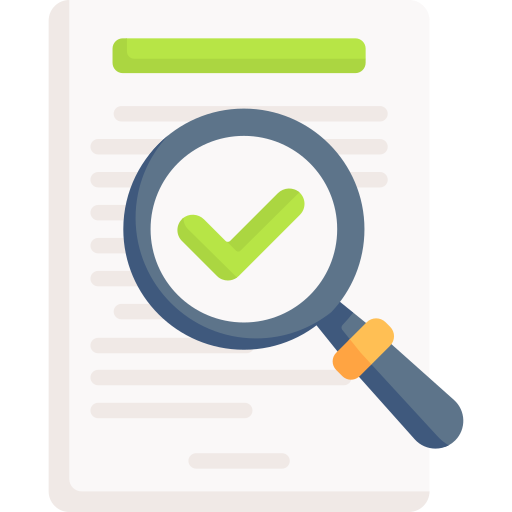“That” and “which” serve many purposes in English writing. What seems to confuse most writers is when these words are used as relative pronouns, which is the focus of this article. (Don’t worry—we will explain what a relative pronoun is in a moment.) Some people use “that” and “which” interchangeably, but there is actually a simple rule to help you know when to use each one. There are also some differences between US and UK English, so we will examine those as well.
Before we go any further, what exactly is a relative pronoun?
A relative pronoun gives information about the noun that comes before it and connects it to a dependent clause. In addition to “that” and “which”, “who” and “whom” (which we covered in a previous article) as well as “whose” and “what” can also be used as relative pronouns.
Let’s just look at a quick example using “who”:
The baker who made these cakes is very skilled.
In the above sentence, “The baker” is the noun, and the subject of the sentence. The relative pronoun “who” connects the baker to the information in the rest of the sentence.
Need Editing and
Proofreading Services?

What about “that”?
In US English, we use “that” at the beginning of a restrictive or essential clause. This simply means that the clause is necessary in order to understand the meaning of the sentence. Without the “that” clause, the sentence is either unclear, some important information is missing, or the meaning changes.
Consider the following sentence:
The cargo that was delivered yesterday was damaged.
The reason we use “that” in the above sentence instead of “which” is because it is important to distinguish the cargo that was delivered yesterday from other cargo that was delivered at other times.
Let’s see what happens when we take out the “that” clause:
The cargo was damaged.
Okay, we have a grammatically correct sentence. It may make sense in some contexts. But unless the reader (or listener, if it is spoken English) happens to be very familiar with the cargo deliveries at this particular business, they won’t have all of the information they need.
Here are a few more examples:
The files that Mario sent must be reviewed by the marketing department before the end of the week.
For our program, we can use the dinosaur song that the children learned last term. (In this example, “that” is at the beginning of a clause, but not near the beginning of the sentence. This is often the case with longer, more complex sentences.)
The warehouse that used to be on this lot was torn down four years ago.
I think we need to fix the water pipes that froze and burst when the heat went out.
When do we use “which”?
We use “which” to introduce non-restrictive or non-essential clauses. These clauses provide additional information or details, but they are not necessary to understand the meaning of the sentence. Sometimes we also use commas (or even parentheses) to set these clauses apart from the rest of the sentence.
My mother’s red hat, which was given to her by my aunt, is too large for my head.
The point of the above sentence is that the red hat is too large. It doesn’t really matter where the hat originally came from. If you take out the “which” clause, the sentence still makes sense and we still have enough information to understand it.
My mother’s red hat is too large for my head.
Here are more examples. While reading these sentences, try to imagine how they would sound without their “which” clauses.
The letter, which has a lot of stamps on it, came from the head office in Singapore.
My church choir, which temporarily disbanded during the Covid lockdowns, will be performing a special holiday concert on Sunday.
The university library, which is one of the oldest buildings on campus, just received a large donation from the Alumni Association.
What about US and UK English?
In American English, the distinctions between “that” and “which” are more clear, as detailed in the above sections. However, in British English, both “that” and “which” are used for restrictive or essential clauses.
Let’s try one of our previous “that” example sentences with “which”:
The files which Mario sent must be reviewed by the marketing department before the end of the week.
This sounds fine, and it is considered perfectly acceptable in places where UK English is spoken. What if you were to use “which” for a restrictive or essential clause in the US? Well, you would sound British. Depending on the sentence, you might also sound more formal. In most cases, it shouldn’t cause any major problems.
That being said, in both US and UK English, “that” is never used for non-restrictive and non-essential clauses. For these types of clauses, “which” is always correct. Therefore, these are the clauses that we need to watch out for.
Need Editing and
Proofreading Services?

If you are dealing with a complex sentence, or one where you aren’t sure if the information in the clause is necessary or not, click the blue box below to receive some help from one of our TextRanch editors. To make sure your editor has enough information to understand your “that vs. which” sentence, please leave a note explaining the context.








2 Replies to Confused About “That” vs. “Which”?
Considering the following two sentences:
1. The cargo that was delivered yesterday was damaged.
2. The cargo delivered yesterday was damaged.
What difference between them? Are they both grammatically correct?
Yes, they are both correct. There are many ways to write a correct sentence in English.
Ask an Editor: A New TextRanch Feature!
Proofreading vs. Editing: What’s the Difference?
Human Editors: Why Do You Need One?
How can I improve my understanding of native-English speakers? Part 1